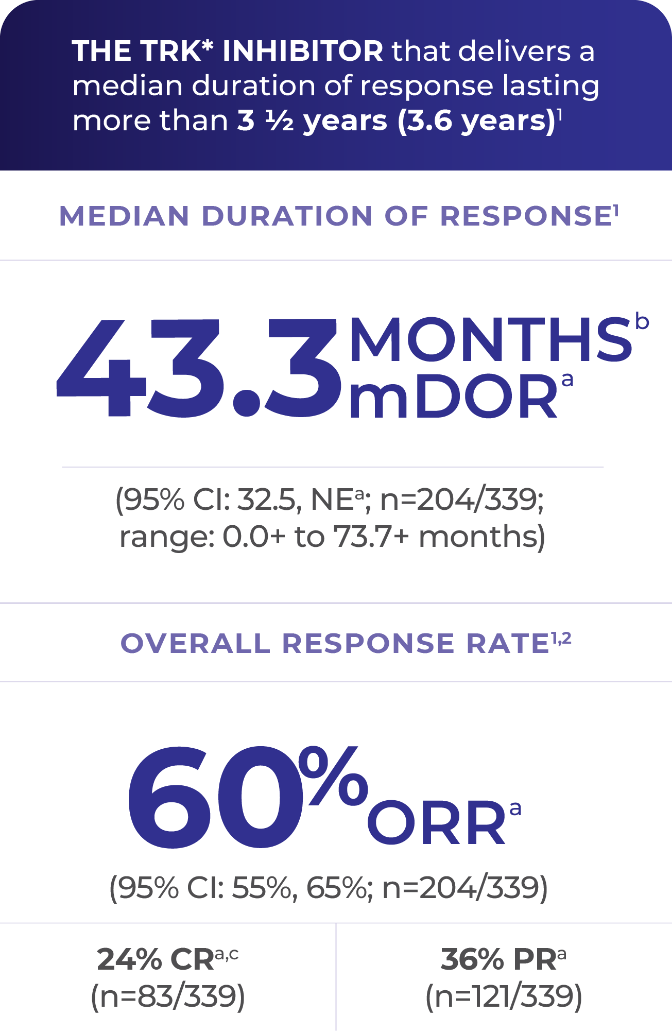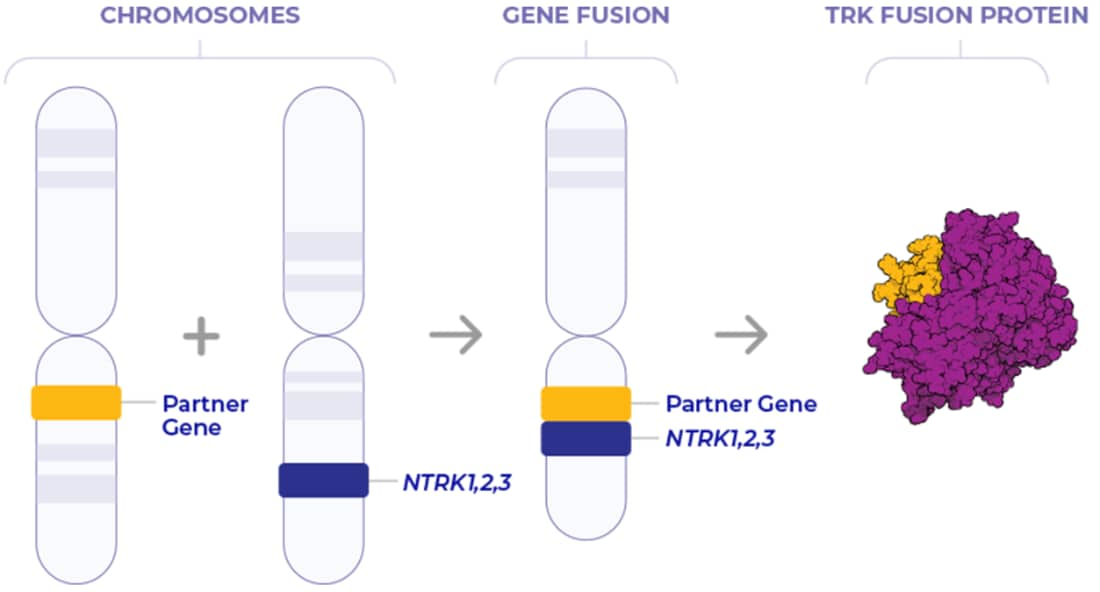STUDY DESIGN:
Pooled efficacy analysis was based on 3 open-label, single-arm clinical studies in adult and pediatric patients with unresectable or metastatic solid tumors with an NTRK gene fusion.1
NO CARDIAC MONITORING REQUIRED WITH VITRAKVI1
Obtain liver function tests (ALT,a AST,a ALP,a and bilirubin) before initiation of treatment and every 2 weeks during the first 2 months of treatment, then monthly thereafter or more frequently following the occurrence of Grade 2 or greater AST or ALT elevation.1
INDICATION
VITRAKVI is indicated for the treatment of adult and pediatric patients with solid tumors:
- have a neurotrophic receptor tyrosine kinase (NTRK) gene fusion without a known acquired resistance mutation,
- are metastatic or where surgical resection is likely to result in severe morbidity, and
- have no satisfactory alternative treatments or that have progressed following treatment.
Select patients for therapy based on an FDA-approved test.

STUDY DESIGN:
Pooled efficacy analysis was based on 3 open-label, single-arm clinical studies in adult and pediatric patients with unresectable or metastatic solid tumors with an NTRK gene fusion.1
NO CARDIAC MONITORING REQUIRED WITH VITRAKVI1
Obtain liver function tests (ALT,a AST,a ALP,a and bilirubin) before initiation of treatment and every 2 weeks during the first 2 months of treatment, then monthly thereafter or more frequently following the occurrence of Grade 2 or greater AST or ALT elevation.1
INDICATION
VITRAKVI is indicated for the treatment of adult and pediatric patients with solid tumors that have a neurotrophic receptor tyrosine kinase (NTRK) gene fusion without a known acquired resistance mutation, are metastatic or where surgical resection is likely to result in severe morbidity, and have no satisfactory alternative treatments or that have progressed following treatment.
Select patients for therapy based on an FDA-approved test.
This indication is approved under accelerated approval based on overall response rate and duration of response. Continued approval for this indication may be contingent upon verification and description of clinical benefit in confirmatory trials.
Learn more about VITRAKVI
Explore VITRAKVI data, patient dosing, testing for NTRK gene fusions, and important practice resources.
+ denotes ongoing response.
*TRK, tropomyosin receptor kinase.
aALP, alkaline phosphatase; ALT, alanine transaminase; AST, aspartate transaminase; CR, complete response; mDOR, median duration of response; NE, not evaluable; NTRK, neurotrophic receptor tyrosine kinase; ORR, overall response rate; PR, partial response.
bKaplan-Meier estimates.1
c5% were pathological complete response. Patients undergoing a surgical resection whose postoperative pathologic assessment showed no viable tumor cells and negative margins were pathological complete responders provided that no other sites of disease were present.1
dBased on medical claims and prescription data claims for the period January 2019 through January 2025. Validated by IQVIA in March 2025.2
References
- VITRAKVI [package insert]. Whippany, NJ: Bayer HealthCare Pharmaceuticals, Inc.; April 2025. Return to content
- Data on file. Bayer HealthCare Pharmaceuticals, Inc., Whippany, NJ. Return to content




